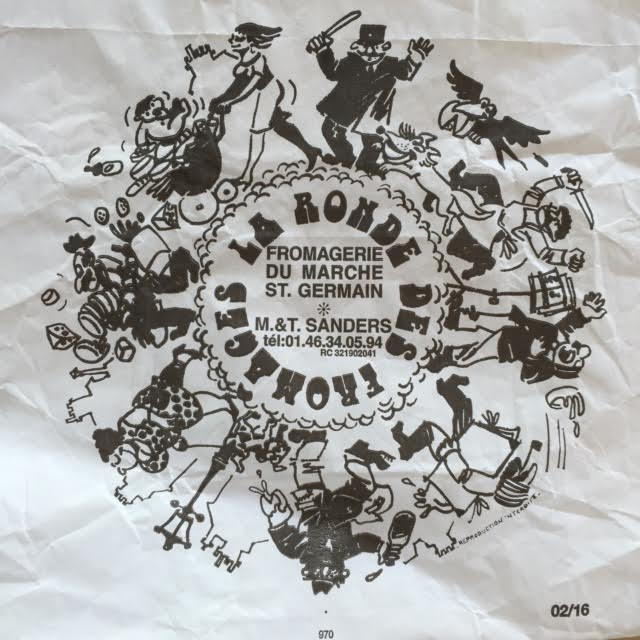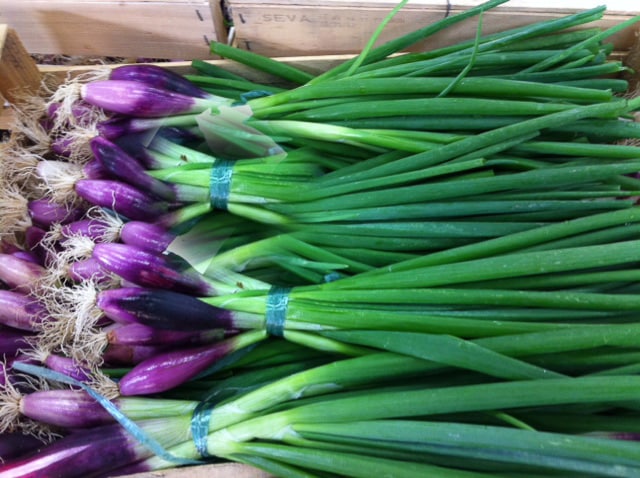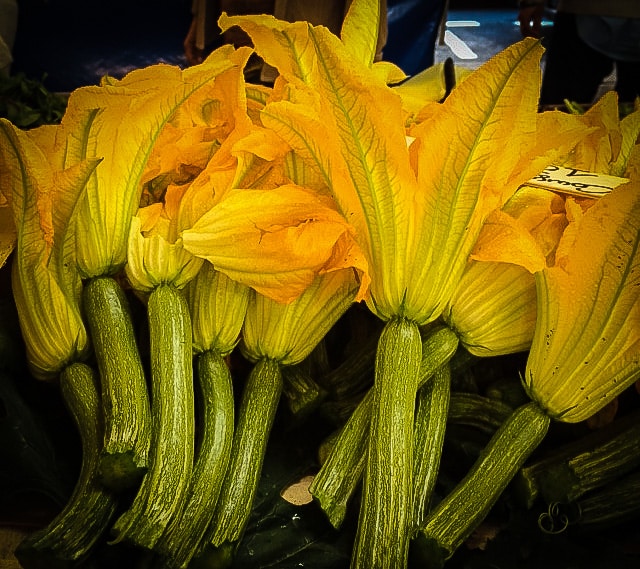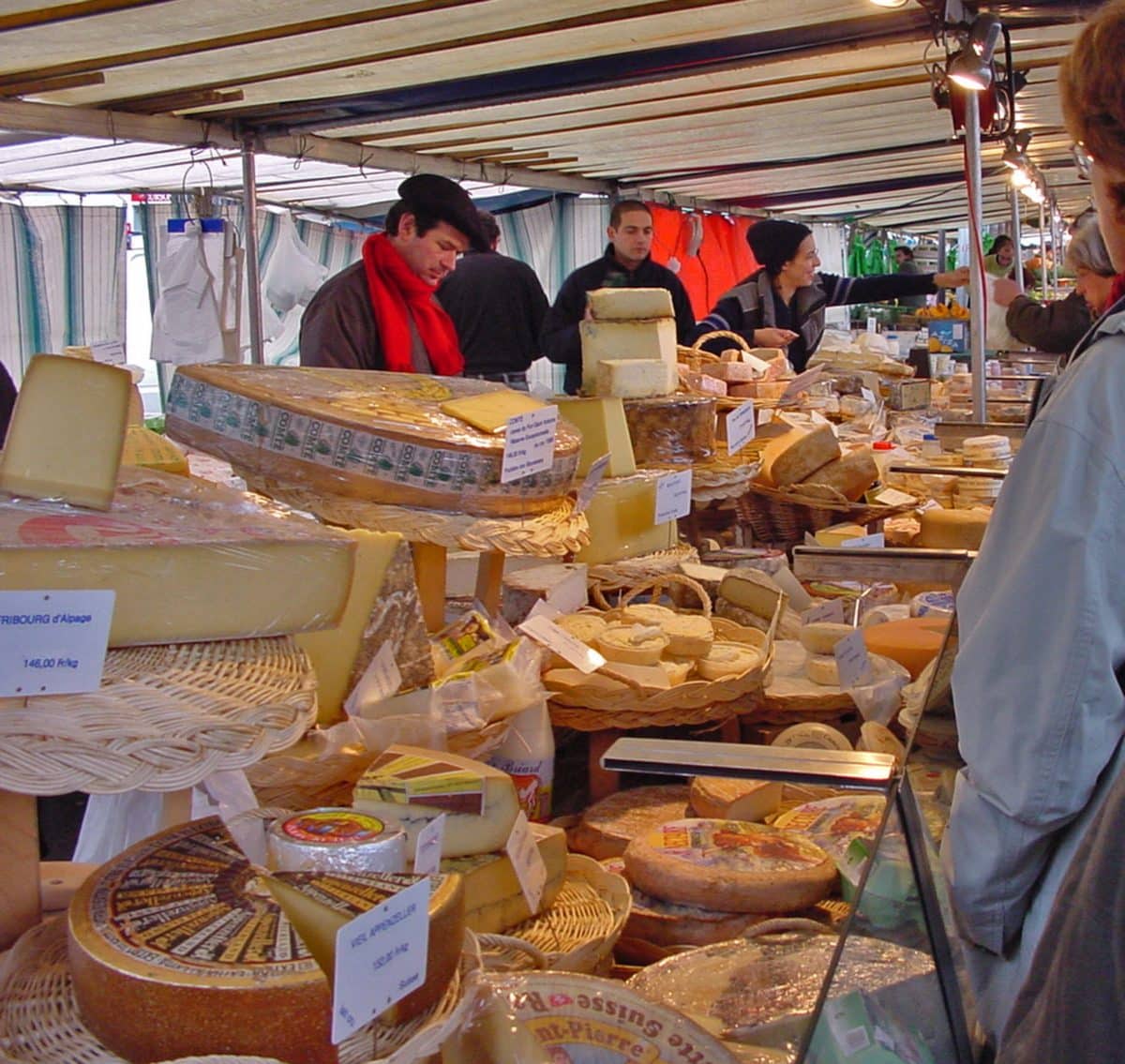Before I ever set foot in Paris, I imagined shopping in the open-air markets. I could see myself walking beside the stalls with a string bag or one of those wicker baskets, the kind that look so beautiful, but turn out to be unwieldy and uncomfortably heavy the instant you drop in the first potato. In my dreams, I spoke fluent French and was always getting secret recipes from the vendors.
I did visit markets on my first trip to Paris, but all I bought was a basket of mirabelles, small plums with a fleeting season. I didn’t have a kitchen where I could cook those gorgeous eggplants or any of the glistening fish that stared at me with clear, jewel-like eyes. I went to markets on every trip I ever made to France, but it wasn’t until 20 years ago, when we signed the lease on our first Paris apartment, that I could really shop at them. And no, my French wasn’t as fluent then as it had been in my dreams, but it progressed and I even got recipes from the sellers.

I live in Paris’s sixth arrondissement, equidistant from two outdoor markets – Boulevard Raspail and Place Maubert – and just a 5-minute walk from one of the city’s few remaining covered markets, Marché Saint-Germain des Prés. It’s an ideal location for a cook and I take advantage of it.
The Raspail market is on Tuesdays and Fridays and it’s organic on Sunday; the Maubert is up Tuesdays, Thursdays and Saturdays; and the covered market is open every day but Monday – if you need anything on Mondays, you must shop at supermarkets or convenience stores, not a hardship, of course, but so much less fun and with many fewer rituals.
The Raspail market is on Tuesdays and Fridays and it’s organic on Sunday; the Maubert is up Tuesdays, Thursdays and Saturdays; and the covered market is open every day but Monday – if you need anything on Mondays, you must shop at supermarkets or convenience stores, not a hardship, of course, but so much less fun and with many fewer rituals.
When I first moved to Paris, a friend, a veteran marketgoer, showed me the proper (that is the French) way to shop. “Don’t buy even so much as an apple,” she admonished, “until you’ve seen everything.”
You’ll probably end up buying from your favorite vendors, but until you’ve walked the length of the market and seen what everyone’s brought that day, well… how can you be sure you’re not missing something wonderful?
And so I always scope out the market before I shop, making a note of what looks particularly good or unusual. The walk also gives me the opportunity to change my cooking plans.
It drives my husband, Michael, completely cuckoo that I head for the market with a list and return with plenty of stuff, little of it from any list. But then, he’s not a cook. If he were, he’d realize that the market is as much a source of inspiration as it is of supplies.

It’s also the best indicator of how the seasons progress. Sometime in late March or early April, you can count on being at the market and hearing someone mention that spring is on its way because the butter is changing color. In the winter, when the cows are eating hay, the butter is pale, almost white; in the spring and all through the summer and early fall, the butter turns golden yellow, the sign that the cows are in the pastures and feeding on grass. Soon after the butter becomes yellow, asparagus turn up, fat spears of green asparagus, even fatter spears of white and those rare spears of violet asparagus. They’ll be piled high in the market and you can be sure that no matter where you eat, whether restaurant or friend’s home, you’ll be served asparagus.
It will be asparagus, asparagus, asparagus, until the season ends. Then there will be strawberries, many varieties of strawberries, and you’ll find your favorites and you and everyone you know will eat strawberries until, they too, disappear from the stalls. And then it will be melons and, soon after, the first apples and the root vegetables and before you want it to be, game season will arrive and the market stands will be heavy with plumed birds. The Paris markets are a calendar unto themselves.
Like everyone else who shops a market regularly, I have my favorites: the fruit-nut-and-spice man at the Tuesday and Friday markets; the Italian vendor at the Sunday organic market – his gorgonzola is the best I have ever had; and the Sunday apple seller, who is not cheerful, but whose apples’ deliciousness override his scowl.
But the market that I think of as truly mine, is the covered market – I’m there every day.
The market doesn’t have the bustle and charm of some other Paris markets – it doesn’t have the energy of the Marché des Enfants Rouges nor the diversity of the Marché Aligre – but it’s got what a day-to-day cook needs: two butchers; two fish markets; one vendor who specializes in Greek foods (he’s my steady source of preserved lemons); one store with everything Italian; one stall that’s a mini natural-foods market; a few prepared-food vendors (I’m vague on these because I don’t shop with them, just as the bakery there isn’t ‘mine’); a very good wine shop; a grand stall in the center of the market that sells produce and fine hams, cured meats and housemade jams and pickled vegetables, and good ice cream too; and Fromagerie Sanders, the reason I’m in the market daily.

I would be at the cheese stand endlessly for cheese, yogurt, milk, cream, farm eggs and small-batch cultured butter no matter who owned the place, but that Michel and Twiggy (yes, that’s her real name and yes, she’s French) are the proprietors quintuples the pleasure.
Twiggy is the first person I see when I walk into the market and I often don’t get further into the space for another 15 minutes or more, because after the traditional kiss on each cheek, there’s the neighborhood news to catch up on, travel plans to discuss – Twiggy travels often and far and always in search of great opera performances – and tales of our children to tell. Oh, and of course there’s cheese to buy.
At home in Paris, cheese is a part of every dinner. Depending on the season, the regulars will be comté, brie, camembert or, in the winter, our favorite cheese, Mont d’Or, ripe enough to eat with a spoon. And when company’s coming, the cheese plate always has at least three cheeses, one of which will be a special treat for me: goat cheese. Because Michael doesn’t eat chèvre, I buy it only when I know I’ll have people who’ll share it with me.
Twiggy knows that Michael doesn’t like goat, but she also knows just about everything else he doesn’t like and all of what he loves, a fact that came in handy when our son, Joshua, wanted to put together a surprise package for us. All he had to do was say, “Twiggy, I want something for my parents.” Done! Michael’s favorite Gruyére was in the package along with a runny Saint Marcellin, a tiny chèvre just for me, a round of fourme d’Ambert and a plaquette of butter speckled with grains of fleur de sel. It was perfect.
We all want to know our farmers, but it’s pretty great to know our cheesemongers, too. ![]()
